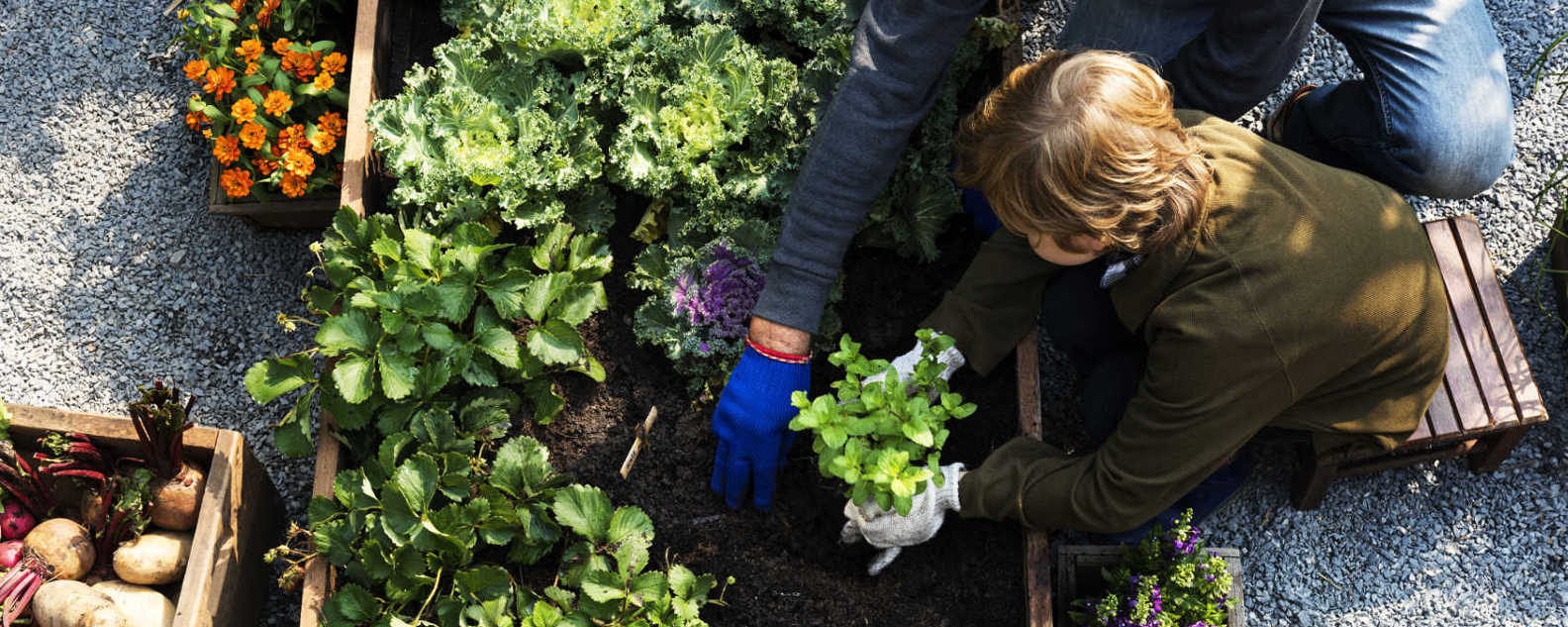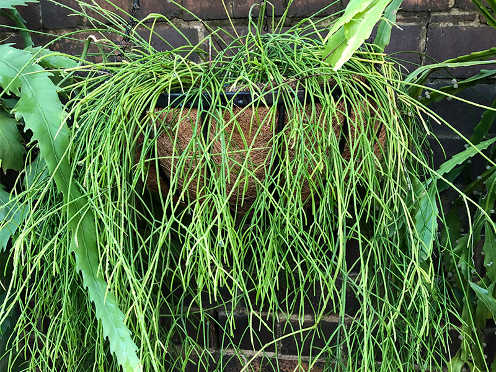Best vegetables to grow for beginners
You don’t need a green thumb or large space to grow veggies at home or on your balcony. Vegetables are some of the easiest plants to grow – all you need is good soil, containers, drainage, fertilisers and of course sunshine!

Growing your own plants and veggies can be extremely rewarding. It can save you money, and it's good for your health and wellbeing.
Getting started
To grow any good plants and vegetables you have to set up for yourself up for success. You will need…
Good soil: The best soil mix for vegetable gardens is organic that includes compost, manure, rock dust and mulch. Qualities to look for in a good soil is good fertility and texture.
When creating the best organic soil mix for a vegetable garden, determination of soil pH is essential before adding any soil amendments. A slightly acid pH between 6.0 and 6.8 is optimal to grow most vegetables.
Adding one or more types of organic matter helps create the healthiest soil to support vegetable growth and development.
Container or earth: There are many different ways to plant your veggies – garden beds, plots in the ground, planters, pots, vertical gardens and more. Whatever space you have you can grow veggies.
Just remember if you are growing in a container you must have holes in the bottom of each – up to four holes is good. No plants like soggy bottoms!
Food: Like us, plants need food. Once your vegetables are established you should keep them well fed with fertiliser. You can buy compost, or make your own at home.
Organic fertiliser is best for vegetables so you know what is growing your food. If you are not fussed and want non-organic you can look to your local nursery for what they recommend for vegetables.
Work compost and a little bit of pelletised manure-based fertiliser through the soil, followed by mulch, to a depth of about 5-7 cm about two weeks out from planting. Your plants will thank you.
Sunshine: How much sunlight your plants are able to get during the day will determine what you can plant. Veggies prefer to be in full sun but there are some varieties that like to grow in partial shade. Remember to read up on your vegetable of choice and take what they like into consideration before planting.

Easiest vegetables to grow
Whether you are a plant enthusiast or novice beginner here are the top vegetables to plant that require the least amount of time, attention or effort. With a little TLC, they will provide you with an abundance of fresh produce that is healthy for you and your hip pocket.
Leafy greens
Leafy greens are some of the most versatile and healthiest veggies for you. There is a huge range to choose from including lettuce, kale, silver beet, rocket, spinach and more.
Lettuce (Lactuca sativa) is traditionally a cool season veggie but it can grow all year round. Plan to add to your garden in spring or autumn. Lettuce seedlings can actually handle a little bit of frost too. Loose leaf varieties grow better in warmer weather conditions. Pick and eat varieties are the best to grow at home.
Available as seedlings, but also germinates readily from seed. Sprinkle in some seed at any time of year and this quick growing vegetable will be ready in weeks. In full heat of summer it is recommend to plant your seedlings in partially shaded spots in your patch or pot. You could plant beans or sweet corn around them to provide some shade as they grow for the hotter months.
Greens need well-drained soil with loads of organic matter or compost and some mulch. Seedlings will benefit if you prepare your soil about two weeks from planting.
Top tip: Water well and keep moist to prevent bitter flavour. Also, if you grow leaf lettuce – when harvesting pull off the bottom leaves instead of cutting the whole thing and the plant will keep growing for you!
Harvest time | 2-3 months (depending on type) |
Ideal temperatures | All year round depending on variety |
Planting time | Spring and autumn |
| Spacing | 15.24 - 45.72 cm (depending on type) |
Germination time | 2-15 days |
Light preference | Sun or partial shade |
Best companion | Root vegetables |
Biggest pest | Snails! Spread coffee around your lettuce or set up a beer trap to discourage snails and slugs. |

Root vegetables: Radishes, turnips and carrots
Nothing grows faster than radishes or turnips! Want a quick success and to feel like a master gardener? Then just plop a few radish or turnips seeds in a pot and within weeks you can see the little roots start to swell. Carrots are best planted in late summer to early autumn and grown over winter.
Top tip: Don’t throw the tops away, they are edible too and make a great pesto or cooked greens. Only takes a few minutes to serve them up.
Harvest time | 2-3 months (depending on type), best time of day is early morning when they are still cold and dewy. |
Ideal temperatures | All year round |
Planting time | Anytime for radishes and turnips, carrots are best in late summer to early autumn. |
| Spacing | 15.24 - 45.72 cm (depending on type) |
Germination time | 2-15 days |
Light preference | Full sun |
Best companion | Keep the area open around these as they like lots of sun to build up larger roots. |
Biggest pest | Snails! Spread coffee around your lettuce or set up a beer trap to discourage snails and slugs. |

Did you know? The Royal Botanic Garden Sydney is the site of Australia’s first European farm. In 1788, nine acres of corn were planted near the Governor’s House. The site overlooked an area distinguished by the name Farm Cove. The first crops were planted out of season, the soil quality was poor and rats raided the patch.
Cucumbers
Cucumbers love the heat of summer and resent cool wet weather. They like adequate drainage and fertile soil. There are two main types of cucumbers to grow for slicing and pickling. Slicing types are long and usually grow to 15-20 cms while pickling types are shorter 7-10 cm.
Top tip: Cucumbers are especially easy to grow but need a trellis or strings to climb on. Great for adding instant shade to your summer patio while adding some crunch to your salads.
Harvest time | 65-80 days (depending on type) |
Ideal temperatures | Above 18 degrees |
Planting time | Spring to mid-summer |
| Spacing | 15.24 - 45.72 cm (depending on type) |
Germination time | 3-15 days |
Light preference | Full sun |
Best companion | No companions for this one as the cucumbers will cover and smother their neighbours. |
Biggest pest | Snails! Spread coffee around your lettuce or set up a beer trap to discourage snails and slugs. |

Broccoli
Broccoli is a great vegetable to cultivate during the cooler months. Only a few generations ago it was considered an exotic Italian vegetable but today it's a mainstream vegetable and diet staple for many. Broccoli is best sown in summer or autumn. Seeds are best sown in starter pots or trays then transferred when they are about 7 cm.
Top tip: Broccoli is susceptible to a soil-borne problem called club root, which causes plants to wilt on hot days, so make sure you plant in a different plant or pot each year to reduce this from happening.
Harvest time | 16-20 weeks |
Ideal temperatures | Best planted in soil temperatures between 7 and 30 degrees |
Planting time | October to November and March to April |
| Spacing | 30.48 - 45.72 cm (depending on type) |
Germination time | 5-15 days |
Light preference | Sun |
| Best companion | Broccoli is bit of a space taker so best to leave these to a container by themselves. |
Biggest pest | Caterpillars! Look for the organic product Dipel powder which can be mixed water. |

Peas/Snow Peas
Peas are easy to grow and a great first time plant for kids or novice green thumbs. Easy to grow anytime of year except summer. They hate the hot weather. There are three varieties of peas that will suit your garden and cooking needs: sweet peas (inedible pods), snow peas (edible flat pods with small peas inside) and snap peas (edible pods with full-sized peas inside). They are a great companion plant for other veggies.
Top tip: If your plant looks a bit too big or if you want something new to try, snap off some of the new shoots for a salad or stir fry. They are all the rage in the culinary world now and guess what? They taste just like fresh peas.
| Harvest time | 65-80 days (depending on type) |
| Ideal temperatures | Cool weather crop so only above 13 degrees and below 21 |
| Planting time | April to September |
| Spacing | 15.24 - 45.72 cm (depending on type) |
| Germination time | 2-15 days |
| Light preference | Sun |
| Best companion | A trellis or strings. Great to cover your cool season replacement for where you had cucumbers in summer. |
Biggest pest | Mildew. Keep plants evenly moist and don’t let them wilt. |

Strawberries
Everyone wants to grow their own strawberries, and nothing is more deliscious than one straight from your patio or backyard. That is if you can beat the possums, cockatoos, slugs and your neighbours to them first.
Top tip: Strawberries are quite attractive plants and actually make great hanging baskets or balcony plants. Make sure when purchasing plants that they are listed as “Everbearing”. This way you will get a longer period of production.
Harvest time | Early spring and autumn peaks with a few throughout summer. |
Ideal temperatures | Any |
Planting time | Anytime of year |
| Spacing | 15.24 cm |
Germination time | Best planted as young plants |
Light preference | Sun or partial shade |
Best companion | Great in containers with flowering plants |
Biggest pest | Snails and slugs! Spread coffee around your lettuce or set up a beer trap to discourage snails and slugs. |
Other suitable veggies, especially to plant and grow at this time of year in NSW, includes Mustard Greens, Kale, Cabbage, Cauliflower, Rocket, Peas, Silverbeet, Beets, Potatoes, and Spinach.

We hope you find the above tips useful. Share your gardening successes with us on Twitter and Instagram with @botanicsydney and #botanicsydney
For more inspiration visit Gardening at Home.
Related resources
